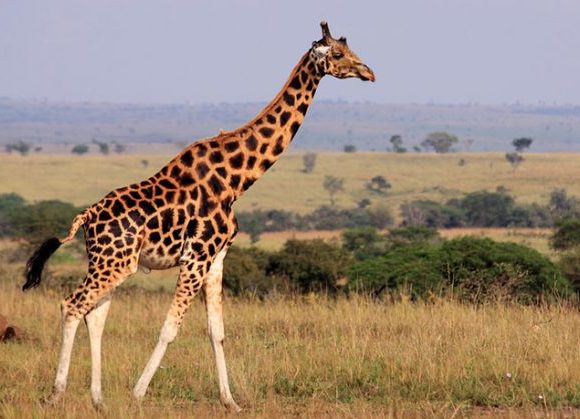New study reveals four species of giraffes
By Emma Gruner, Contributing Writer
Earlier this month a momentous discovery was made in the scientific community, as conservationists logged three new species of large, African mammals. No, these mammals were not encountered in some secluded patch of savannah, untouched by human civilization. Rather, they have been hiding in plain sight for years. According to a study published on September 8, 2016 in Current Biology, the name “giraffe” now encompasses not one but four genetically distinct species.
The study in question was conducted by Axel Janke, a geneticist at Goethe University in Frankfurt, Germany, and Julian Fennessy, a member of the Giraffe Conservation Foundation in Namibia. They collected and analyzed skin biopsies of 190 giraffes throughout Africa, intending to study the (supposedly minor) genetic differences of the nine previously recognized subspecies of Giraffa camelopardalis. Given the similarities in coat patterns and ecological requirements of all giraffes, scientists had never considered the possibility of multiple species. Yet that is exactly what Janke and Fennessy concluded upon the examination of the giraffe genomes. Now, in addition to Giraffa camelopardalis, now called the northern giraffe, scientists now recognize the southern giraffe (Giraffa giraffa), the Masai giraffe (Giraffa tippelskirchi) and the reticulated giraffe (Giraffa reticulata), all occupying different areas of the African continent. For comparison’s sake, the genetic differences between the different giraffe species are similar to those between brown bears and polar bears.
So what does this mean? The most immediate effects of the discovery will probably be seen in zoos, as it will now be easier for breeders to make acceptable pairings. Yet the most pressing implication is in the newfound urgency of conservation efforts. Giraffes were already in a vulnerable position; their numbers have dropped from over 150,000 to less than 100,000 in the past thirty years. When considering the giraffes as separate species, however, the situation becomes much more dire. According to Fennessy, “northern giraffe number less than 4,750 individuals in the wild, and reticulated giraffe number less than 8,700 individuals–as distinct species, it makes them some of the most endangered large mammals in the world.”
As any scientist knows, though, there is always more to learn. In comparison to other large African mammals like elephants, rhinoceroses, gorillas and lions, very little research has been done on giraffes, and this new discovery proves how much we still do not know. Currently, new studies are being conducted to determine what (if any) gene flow exists between the different giraffe species, as well as what factors caused the giraffe to diverge into different species in the first place. One theory is that rivers and other physical barriers on the continent have separated the species long enough for their genomes to become distinct, although of course, one can never be too confident in their assumptions. If one thing is for certain, it’s that this study has brought giraffes into the forefront of the scientific scene, where they will likely remain for the foreseeable future.

